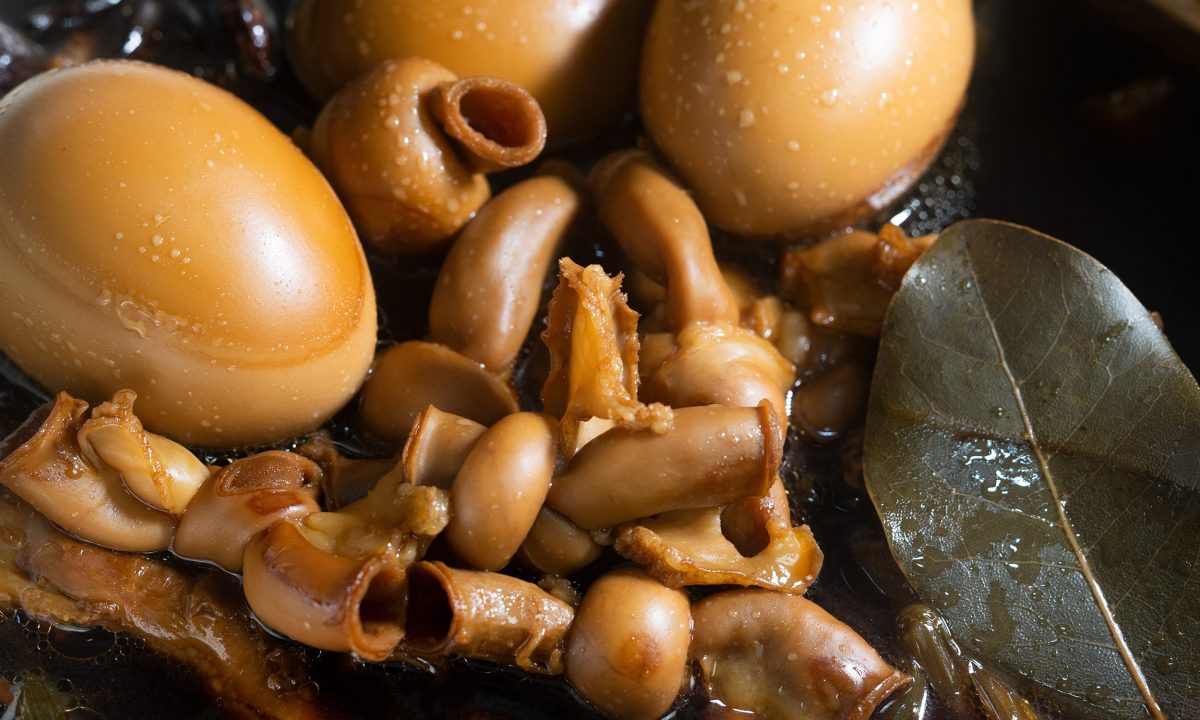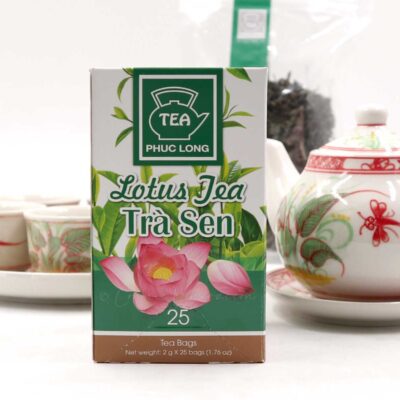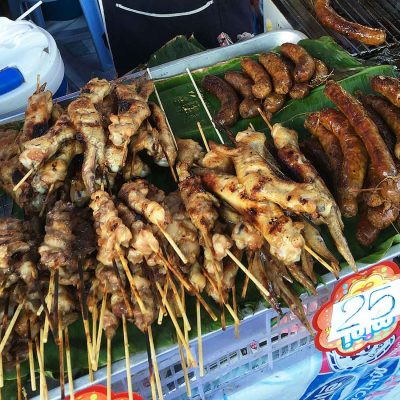A scene from my childhood: My father comes home from his early morning trip to the market with a whole head of pig, cleans it then takes it to the neighborhood bakery where he asks the owner (a friend of his) to roast it.
Hours later, he retrieves the pig’s head from the bakery and we sit down to lunch. My father carves the pig’s cheeks, slices the ears and the snout. With all the meat almost gone, he splits the roasted pig head through the bone with a heavy cleaver and hands me the best part — the brain. My mother cringes; my brother’s face is inscrutable.
I’m done with lunch so I place the pig’s brain in a bowl and, taking a spoon, I run next door to my grandparents’ house. I go up to my aunt’s room, sit on the floor and eat the pig’s brain with my spoon. My aunt cringes and tells me I will get sick from all the fat in the pig’s brain. I keep eating anyway.
I was about seven years old.
Offal before Keto
In Asia, no part of the cow or pig goes to waste. Or even fish and chicken, for that matter. In China,pork blood souphas been consumed for over a thousand years. Pork tongue and ears are mainstays in the Chinese cold platter. Chicken feet, pig’s trotters and duck tongue are in thedimsum menu.
TheVietnamesebun boHue(beef noodle of Hue city) has “hunks of meat like marinated beef shank, oxtail, pig’s knuckles, and pig’s blood congealed into maroon, tofu-like cubes.”
In Japan and most of Southeast Asia including the Philippines, offal is often skewered and grilled, or added to soup.
In the Middle East,maghz(ox brain) andnkhaat(lamb’s brain) are parboiled then pan fried.Kokoretsi— grilled offal (heart, lungs or kidneys) wrapped in lamb or goat intestines — and khash — boiled offal that may include parts of the head, stomach and feet — are eaten not only in the Middles East but also in Eastern Europe and Greece.
The British have theirhaggis, steak and kidney pie,brawn(or “head cheese” which is no cheese at all but a terrine made with meat from the head of the cow or pig) andblack puddinga.k.a. blood sausage.
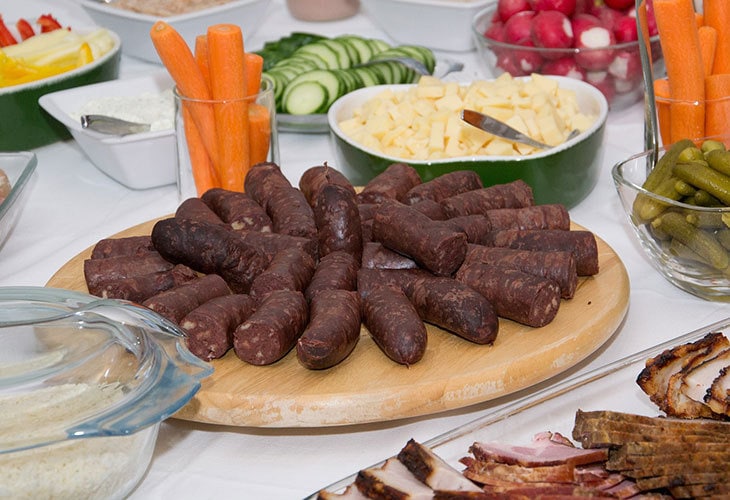
Denmark and Iceland have their versions of brawn and blood sausage. Finland and Sweden have blood sausages too. In Norway, two offal dishes traditionally served on Christmas —smalahove(salted and dried sheep’s head) andsyltelabb(cured pig’s trotters).
The Germans call their “head cheese” Zungenwurst. The French have a sausage called andouillette made with pork or veal intestines. In Austria, there isbeuschl, a stew made with veal lung and heart.
In Southern Europe, consumption of offal is even more widespread. In Spain, there’s callos a la Madrileña, a tripe stew, which is one of the more globally known offal dishes in the country. Menudo is another Spanish tripe stew. But there are lesser known offal dishes like pan-fried bull’s testicles (criadillas) and dishes made with pork and veal tongues.
Italy consumes a lot of offal too. Rome has its own tripe stew calledtripa alla Romanaand there’scoda alla vaccinara, a tomato-based oxtail stew.
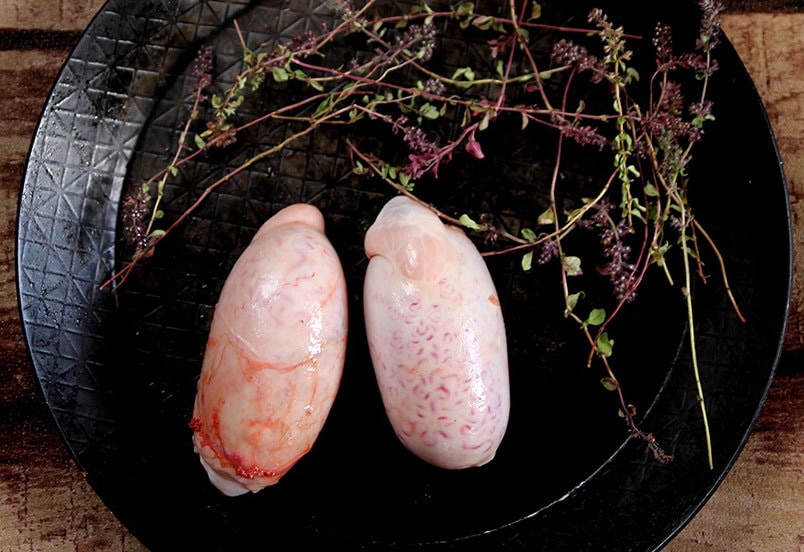
In South America, the culture of offal consumption was already well-entrenched prior to European colonization as evidenced by the Boliviananticuchos— skewered and grilled beef or chicken heart — and the arrival of the Europeans many have strengthened that culture even more. Variations ofsopa de mondongo, a tripe and vegetable soup, are found in Puerto Rico, Panama, Brazil, Colombia, El Salvador and Venezuela. In Argentina,huevos de toro(bull’s testicles) are served boiled or fried.
Economy affects perception of offal
The way I see it, the appreciation for offal (think of it as the appreciation for every part of an animal) is, in a broad sense, related with a population’s relationship with the soil (farming; animal raising) and living off its produce.

People who know animals know meat. People who only see meat after they have been cut and sold don’t really know animals and, hence, the perception that only the pretty cuts taste good. An urban versus rural thing, perhaps, if we have to simplify it.
The urban versus rural theory finds support when we realize that offal dishes in countries where offal is eaten are essentially peasant food. The “humble pie” of Medieval England, the Welsh faggot, the Spanishcallos, haggis, black pudding… Tradition kept them alive.
So, it’s not surprising that offal has been traditionally part of the cuisine of regions where agriculture (including dairy farming) has historically been an integral part of life. But in places where industrial manufacturing fires the economy, and where a vast majority of the population don’t see cows and hogs and sheep, eating offal is not so common.
Elitism hinders appreciation for offal
To illustrate the section better, let me go back to a book I read when I was in my teens.The Immigrantsby American novelist Howard Fast and its sequel,Second Generation. The protagonist in the second book is Barbara Lavette, daughter of a poor-Italian-immigrant-turned-millionaire Dan Lavette and the born-with-a-silver-spoon Jean Seldon. The story begins with The Great Depression and Barbara is a volunteer in a soup kitchen.
I don’t remember much of the story except for the first part because that was what made such an impression on me. Barbara and their housekeeper (or is it the cook?) are discussing the cost of food for the household. The housekeeper (cook?) scoffs that Barbara’s mother’s penchant for prime cuts when the tastier meats are actually the cheaper cuts (ah, the implied ignorance and snobbery of Barbara’s mother).
The tirade of the housekeeper (cook?) was a refrain that would get repeated in many, many books that I would later read. And I finally concluded that “prime cut” actually means the prettiest looking meat cuts and the rich don’t care to look at ugly things.
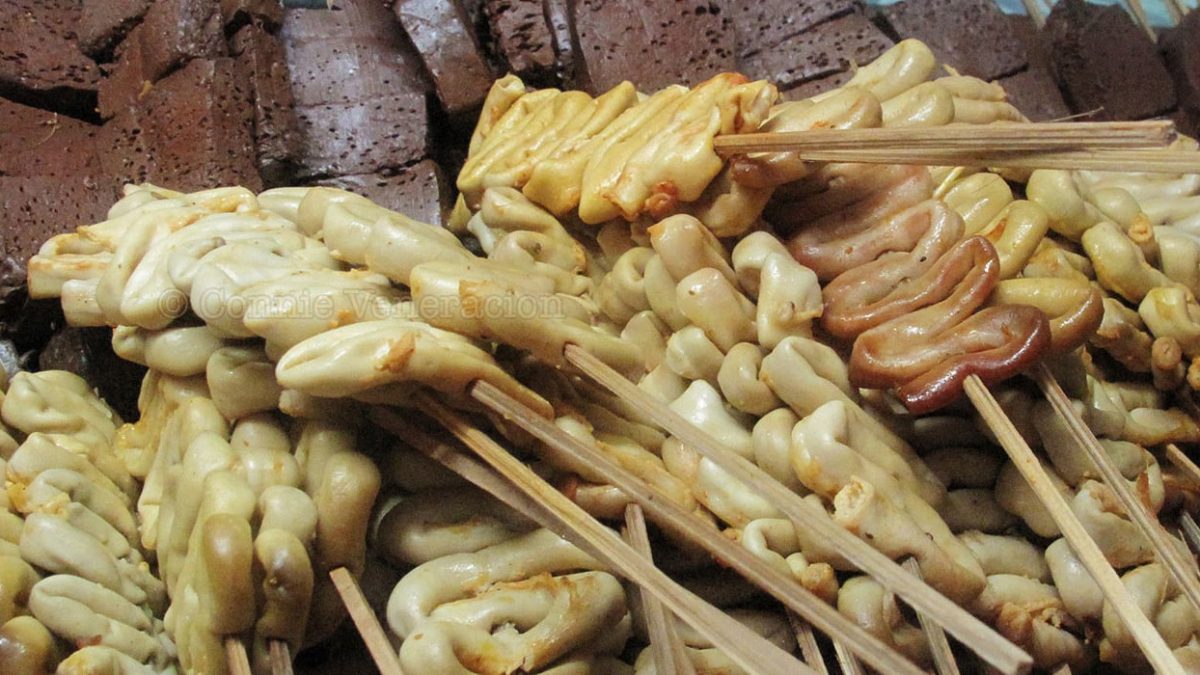
What does a fictional housekeeper’s (cook’s?) sarcasm have to do with eating offal? A lot. She nailed it, to my mind. Well, author Howard Fast did. It’s a class thing. If one has money and can afford prime cuts, why buy trimmings and offal which are considered scrap? It’s the same attitude about fish. Why eat fish head when the thickest meat is in the body? It’s as though eating certain parts of an animal — the rejects after the prime cuts have been carved out — is something that one only does when one is poor.
Offal in the Age of Keto
Eating offal, as a lifestyle, is less wasteful. Besides, offal by itself is delicious. There had been attempts by some chefs to highlight the value of eating offal in the past. Anthony Bourdain oncesaid, “Nearly anyone — after a few tries — can grill a fillet mignon or a sirloin steak. A trained chimp can steam a lobster. But it takes love, and time, and respect for one’s ingredients to properly deal with a pig’s ear or a kidney.”
I can still see TV chef Michael Symon wearing his “I love offal” T-shirts in his cooking show.
Still, eating offal didn’t really take off. It wasn’t until ketogenic diet became a thing that people finally began giving offal more than a passing thought. Offal (mammal offal from grass-fed animals, that is) is being hailed by keto proponents as highly nutritious and cheap too. Keto food bloggers are publishing offal recipes that look like dishes from fine dining restaurants. And it’s amazing how people are responding.
No one in my family is on ketogenic diet. But I love what the keto diet craze has done for offal. I really do. And I hope that the fad stays around long enough for one generation to embrace eating offal as a way of life and not just as a mere curiosity or a seasonal indulgence. I hope that the appreciation for offal becomes something that this generation can pass on to future generations.

